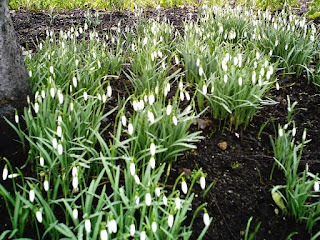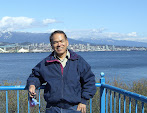
 Dear Sugeng,
Dear Sugeng,Nanaimo is located in Vancouver Island, about 2 1/2 hours away from Vancouver: 45 minutes drive to Horseshoe Bay ferry terminal and 1 hour 45 minutes ferry ride to Departure Bay, Nanaimo. Vancouver Island itself is about 40 km west of Lower Mainland across the water, and it's size is about 1/4 of Java Island. Victoria is the capital of British Columbia and is the largest city in the Island, and Nanaimo with 80 000 population is the distant second largest city. There are 3 ferries to service Nanaimo - Horseshoe Bay route, the "Queen of Coquitlam", "Queen of Cowichan" and the "Queen of Oak Bay". They are large ferries that each can carry 360 cars and 1500 passengers. It consists of 7 decks, that is the height of a 7 storey tall building. Deck 1 is for engine room, decks 2,3 and 4 are for cars and trucks, decks 5 and 6 are for passengers, and deck 7 for navigational room. The Nanaimo - Horseshoe Bay service runs 8 times daily during winter, but more sailings in summer starting in June to accommodate with the influx of tourists. Tourism is one of the largest industry in British Columbia together with forestry, fishing and mining. The top photo shown is the Horseshoe Bay ferry terminal. The ship that is further away is the "Queen of Oak Bay" on it's way to Departure Bay, Nanaimo. The one that is still on dock is a smaller ferry, a 100 cars and 500 passengers capacity to service the 40 minutes shorter route to Langdale, Sunshine Coast.
Last July 2006, I went for a week to visit a very good friend Tan in Nanaimo, and boarded the "Queen of Oak Bay". Tan and his family immigrated to Canada some 20 odd years ago and opened a restaurant in North Nanaimo. They started the restaurant business in Vancouver a few months after their arrival in Canada. But soon they discovered that there were too many cutthroat competitions around. It was very hard to survive, let alone making a profit, and they were losing money big time. So they looked around for a better alternative and moved to Nanaimo and opened a restaurant there instead. Like most immigrants they work very hard. Essentially it is a family run restaurant business, and everybody has to pitch in, husband, wife, sons, daughters, nieces, nephews and other relatives that happen to come for a visit, have to help and work at the restaurant. I am happy to be treated as one of the family. It is hard work, low profit margins, and therefore the long hours of work to get a decent income. Start at 10 am, and most of the time finish at 2 am next mornings, 7 days a week. They have to, because they need to support their children to go to University, one daughter is attending Dentistry College and one son is in College of Music. They hope that their children will have better jobs than what they now have. They know perfectly well that this is not the best way to make a decent living in Canada, but the only way they know. Having a good education is the best way to go. From time to time they also "have to" send some money to many relatives from both sides in the Old Country, that seems always in need of "emergency" financial helps. Everybody they know in Canada send money back to the Old Country, and they have to send too, and it became a "tradition". The Tan's are very hard workers and very generous too. I admire their spirits. I help them around during lunch time to 3 pm wherever help is needed, sometimes as kitchen help sometimes as a waiter. They did enough help during dinner time. Besides they said they did not want me to work too hard. But I did help them with their paperwork at night time though. They let me stay in their spare bedroom during my one week duration with them.
Here at bottom photo you see me in the kitchen making spring rolls.
I always enjoy the ferry ride during the 1 hour 45 minutes ride to and from Nanaimo. I have been to Vancouver Island a few times in the past. The views of the waterways around Gulf Islands are gorgeous, one of the best in the world. There are probably a dozen populated islands between Lower Mainland and Vancouver Island, and all are always crowded with tourists in summer. I visited one of them 3 years ago, the Saltspring Island for R&R (rest and recreation), and played a couple of rounds of golf. In Nanaimo, in my spare time I visited and explored neighbouring towns: Parksville, Qualicum Beach, Ladysmith and Chemainus. These areas are rich with histories, how the early day pioneers like Robert Dunsmuir who became very rich after discovered coal in 1869 in Nanaimo. Then expanded his empire into logging, shipping and transportation businesses. Nanaimo and Ladysmith were the centre of his operation, and where the first original immigrant settlements developed. People at Chemainus are proud to promote their "town of murals", where the whole communities work together to create large mural paintings that averages 8m x 2m in sizes painted on the outside of building walls across town, and became tourists' attractions. Yes, tourists are really coming to see the hundreds of murals at Chemainus, and help promote the town and the local economy. The murals depicting the history of the areas, about people working in coal, logging, fishing and transportation in the early days. All murals were drawn by local artists and students.





